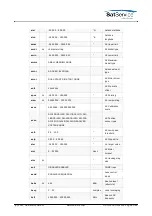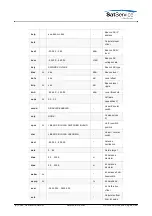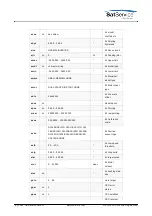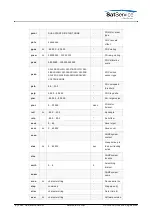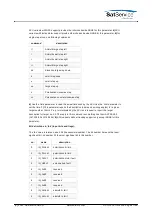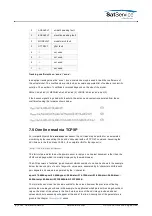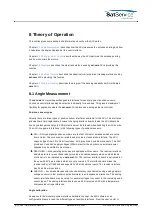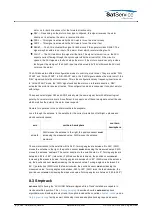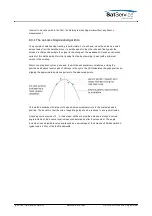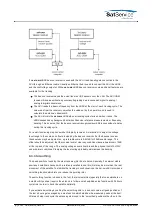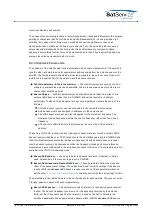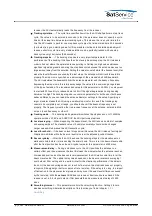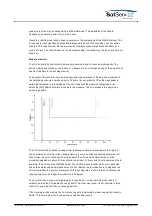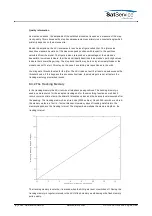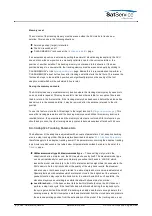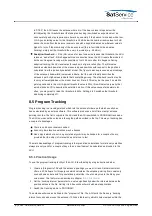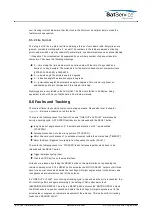
The diagram above shows the sequence of steps the tracking algorithm performs in one cycle on
one axis. It starts with a depointing step in one direction (A). If this step lets the signal level
decrease, the antenna makes a double step in the opposite direction. It the first step leads to a
better receive level, the tracking algorithm adds one or two steps in the same direction.
For a reliable tracking operation the step size have to be big enought to rech the maximum within
the 3dB bandwith within in the entered cycle time. This meas for an inclient satellite you need a
shorter cycle time than for a geostationary satellite.
To perform a step track, the ACU requires the actually measured beacon level as a rate of the
received signal quality and therefore the closeness of the antenna pointing to the ideal value.
The sat-nms ACU is capable to be operated both with the sat-nms LBRX beacon receiver and
with third party beacon receiver products.
With a third party beacon receiver, the ACU reads the beacon level from an analog voltage input.
The beacon receiver therefore must provide a dB-linear output voltage, preferably in the range
0...10V. If the sat-nms beacon receiver is used, then the beacon level is sent from the beacon
receiver to the ACU via UDP packets on the LAN.
(C) 2022, SatService GmbH
www.satnms.com
ACU-19V2-UM-2209 Page 55/65

